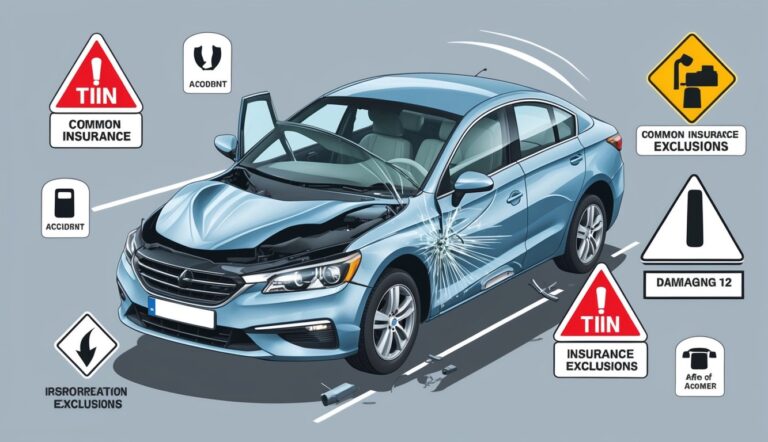Car insurance provides essential financial protection for vehicle owners.
While policies cover many situations, you need to understand what they don’t include.
Knowing these exclusions can help you avoid unexpected costs and make informed decisions about additional coverage.
You need to be aware of common car insurance exclusions to protect yourself from potential financial risks. These exclusions vary by policy and insurer.
They typically include certain types of damage, specific driving situations, and particular uses of your vehicle.
By familiarizing yourself with these limitations, you can better assess your insurance needs and consider supplemental coverage options if necessary.
1) Wear and Tear
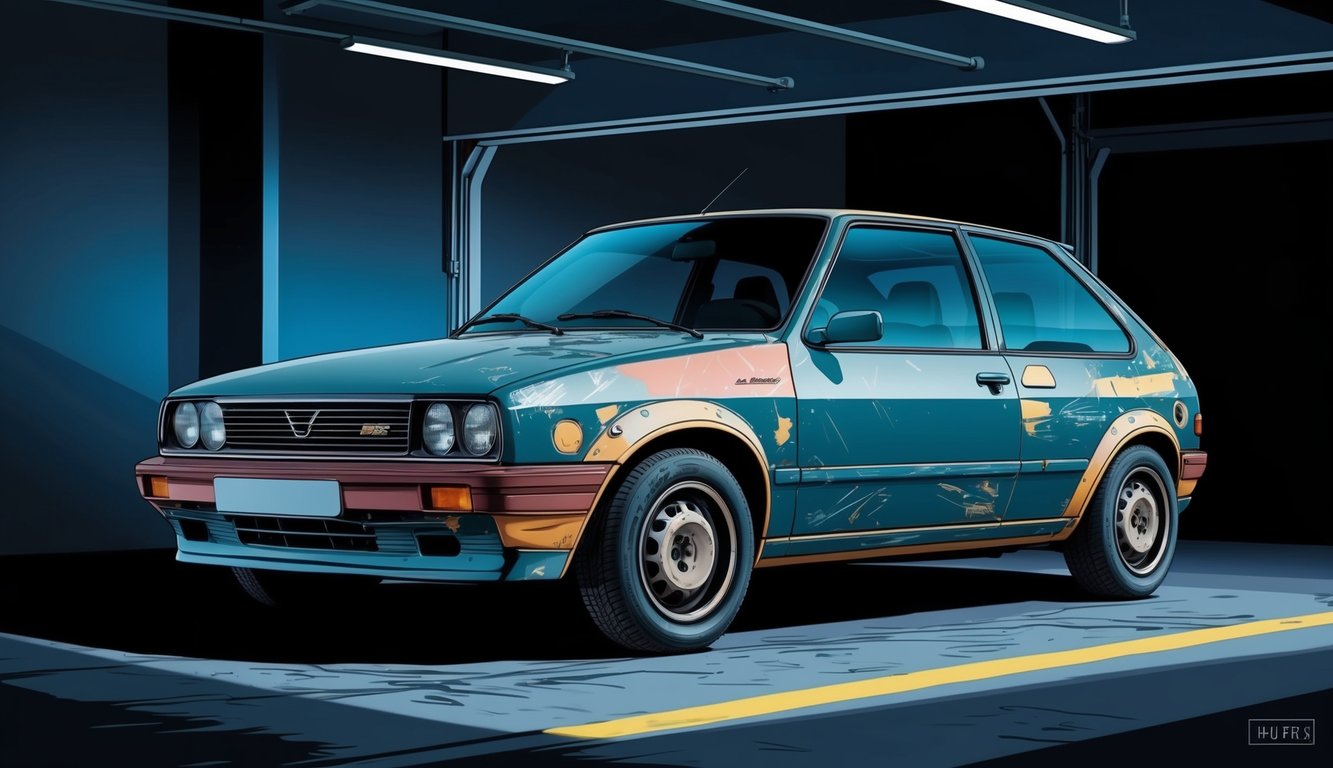
Car insurance policies typically exclude normal wear and tear from coverage.
This means your insurer won’t pay for repairs or replacements resulting from the gradual deterioration of your vehicle over time.
Wear and tear encompasses a wide range of issues that naturally occur as you use your car.
This can include worn brake pads, aging tires, faded paint, or engine parts that break down due to regular use.
Insurance companies expect you to maintain your vehicle and address these issues as part of routine upkeep.
They consider wear and tear a predictable expense that falls under your responsibility as a car owner.
It’s important to distinguish between wear and tear and sudden, accidental damage.
If your car suffers damage from a collision or severe weather event, that’s typically covered by your policy, assuming you have the appropriate coverage.
To protect yourself from unexpected repair costs, consider setting aside money for regular maintenance and eventual replacements. Regular vehicle maintenance can help prevent more serious issues and extend the life of your car.
Some extended warranties or mechanical breakdown insurance policies may cover certain wear and tear items.
However, these are separate from your standard auto insurance policy.
2) Mechanical Breakdown
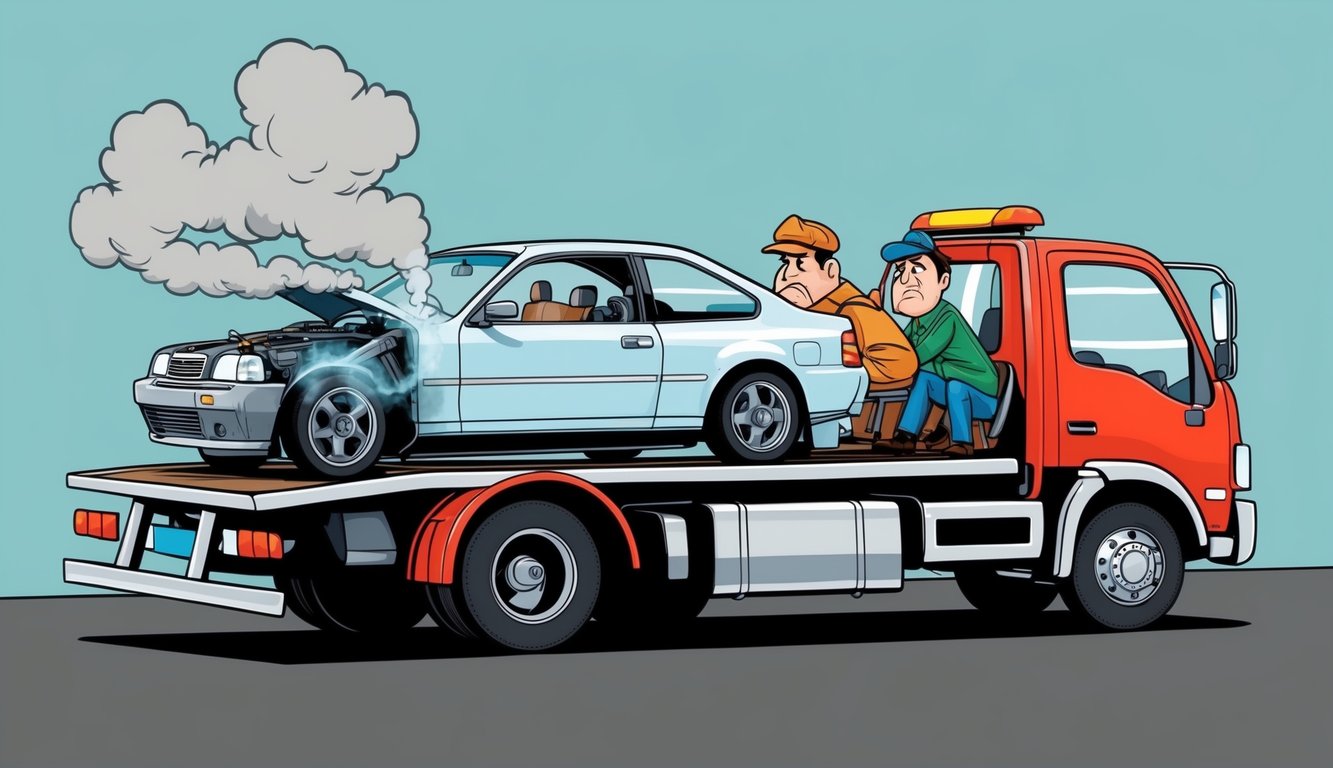
Mechanical breakdown is typically not covered by standard car insurance policies.
This exclusion refers to repairs needed due to normal wear and tear or mechanical failures of your vehicle.
Standard auto insurance focuses on accidents and unexpected events, not routine maintenance or mechanical issues.
If your engine fails or your transmission gives out, you’ll likely have to pay for repairs out of pocket.
Some insurers offer mechanical breakdown insurance (MBI) as an optional add-on.
This coverage can help with repair costs for major vehicle systems.
MBI is usually available for newer vehicles with less than 15,000 miles.
It often extends beyond the manufacturer’s warranty, providing longer-term protection for your car.
The average cost of MBI is around $100 per year, plus a deductible when you make a claim.
Consider your car’s reliability and your ability to pay for unexpected repairs when deciding if MBI is right for you.
Keep in mind that MBI has limitations.
It typically doesn’t cover routine maintenance, cosmetic issues, or damage from accidents.
Always read the policy details carefully to understand what’s included and excluded.
If you opt not to get MBI, setting aside money for potential repairs can be a wise alternative.
This way, you’re prepared for mechanical issues that your regular insurance won’t cover.
3) Intentional Damage
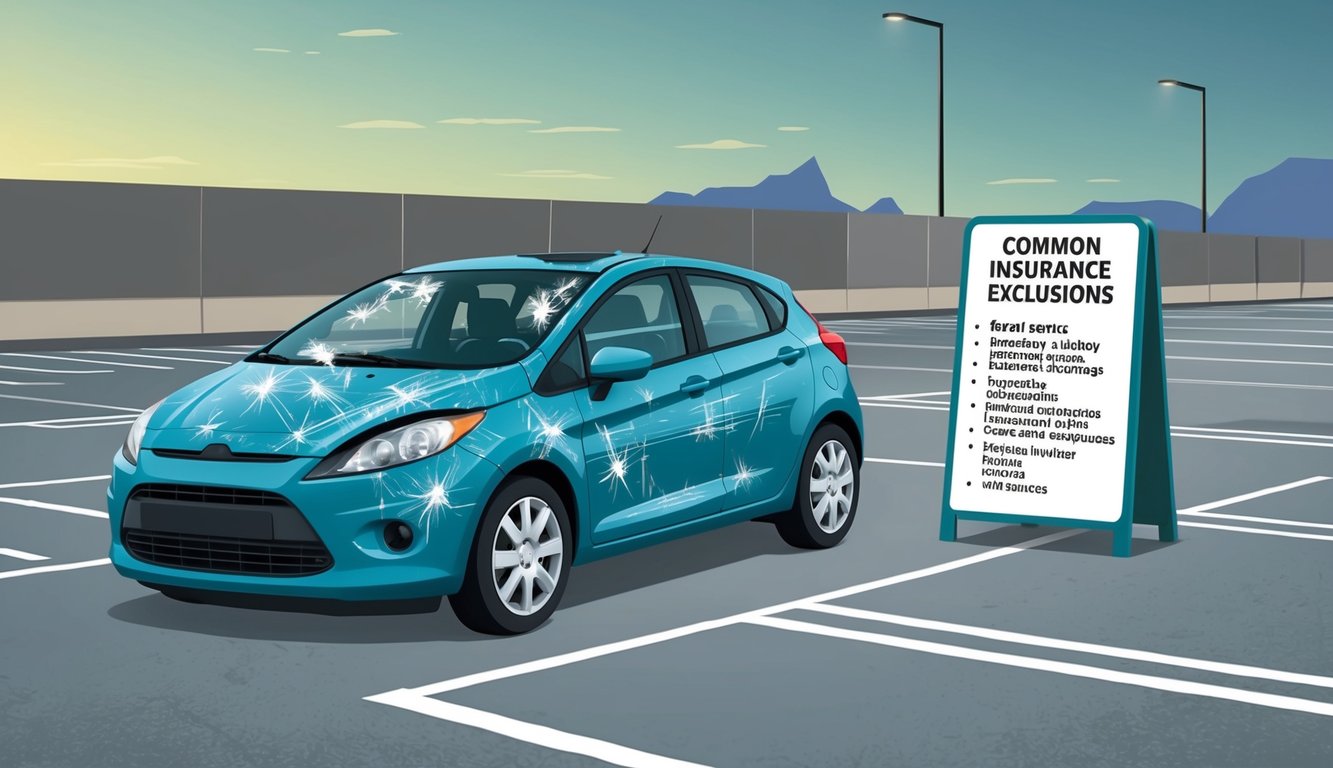
Car insurance policies typically exclude coverage for intentional damage.
This means if you deliberately cause harm to your own vehicle or someone else’s property, your insurance won’t pay for the repairs or damages.
Insurance companies implement this exclusion to discourage fraudulent claims and reckless behavior.
It’s designed to protect insurers from policyholders who might intentionally damage their cars for financial gain.
The intentional injury exclusion also applies to injuries you might cause to yourself or others on purpose.
This clause is common in most automobile insurance policies and no-fault statutes.
This exclusion doesn’t just cover obvious acts of vandalism.
It can also apply to risky behaviors like drag racing or excessive speeding that result in damage or injury.
If you’re found to have caused damage intentionally, you’ll be responsible for covering all costs out of pocket.
This can include repairs to your own vehicle, damages to other people’s property, and any resulting legal fees.
Always remember that insurance is designed to protect you from unforeseen accidents and events, not deliberate actions.
Engaging in intentional damaging behavior not only puts you at financial risk but can also lead to legal consequences.
4) Rental Car Usage
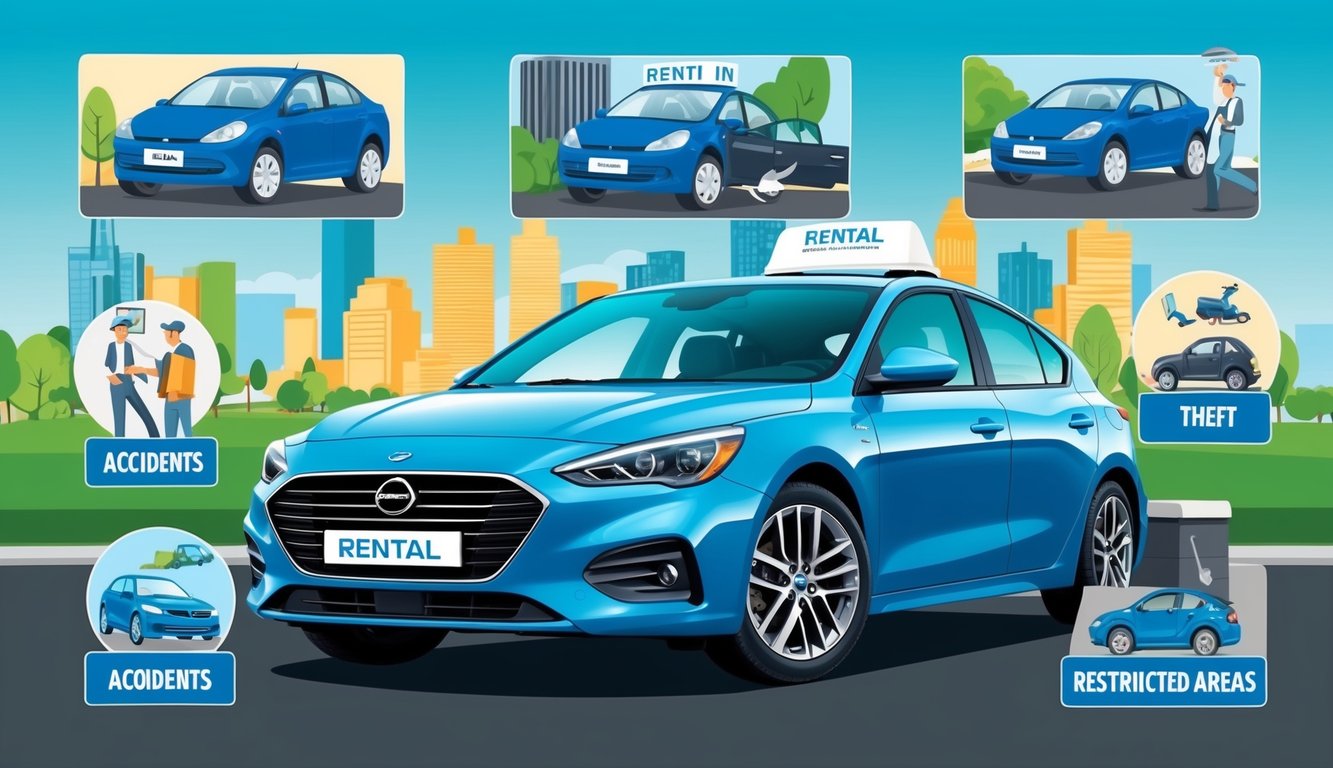
When you rent a car, your personal auto insurance policy may not provide full coverage.
Many insurers exclude rental car usage from standard policies, leaving you potentially exposed to financial risks.
It’s crucial to understand the limitations of your insurance coverage for rental cars.
Some policies may offer limited protection, while others provide no coverage at all for rental vehicles.
Before declining the rental company’s insurance, check your policy carefully.
You might need to purchase additional coverage to protect yourself fully while driving a rental car.
Rental car insurance typically costs around $61 per day on average.
This can add up quickly, but it may be necessary if your personal policy doesn’t extend to rentals.
Common types of rental car coverage include liability, collision damage waiver, personal accident, and personal effects protection.
Each addresses different aspects of potential risks associated with renting a vehicle.
Be aware that using a rental car for business purposes may further complicate coverage.
Your personal policy is even less likely to cover business-related rentals.
To avoid surprises, contact your insurance provider before renting a car.
They can clarify your existing coverage and advise on any additional protection you might need for your specific rental situation.
5) Commercial Use
Your personal auto insurance policy typically excludes coverage for commercial use of your vehicle.
This means if you use your car for business purposes, you may not be protected.
Commercial use can include activities like delivering goods, transporting passengers for a fee, or using your vehicle for work-related tasks.
If you’re involved in an accident while using your car for these purposes, your insurance company may deny your claim.
Many people unknowingly violate this exclusion.
For example, if you occasionally use your personal vehicle to make deliveries for your small business, you might be at risk.
Even if it’s not your primary job, occasional commercial use can still fall under this exclusion.
Commercial auto insurance is designed to cover vehicles used for business purposes.
If you regularly use your vehicle for work, consider obtaining this type of coverage to ensure you’re properly protected.
It’s important to be honest with your insurance provider about how you use your vehicle.
If you’re unsure whether your activities count as commercial use, ask your insurance agent for clarification.
Remember, ride-sharing services like Uber or Lyft often require special insurance coverage.
Standard personal auto policies usually don’t cover these activities, so you may need additional protection if you participate in ride-sharing.
6) Ridesharing Activities
Many standard auto insurance policies exclude coverage for ridesharing activities.
This means if you use your personal vehicle for services like Uber or Lyft, you may not be protected in case of an accident.
The ridesharing process is typically divided into three periods. Period 1 is when the app is on and you’re waiting for a request.
Period 2 begins when you accept a ride and drive to the pickup location.
Period 3 covers the time when passengers are in your car.
Your personal auto insurance usually doesn’t cover these activities.
Rideshare companies often provide some coverage, but it may not be comprehensive.
To protect yourself, you need to consider additional insurance options.
One option is rideshare insurance, which fills the gaps between your personal policy and the coverage provided by the rideshare company.
Another option is commercial auto insurance, which provides more comprehensive coverage for all phases of rideshare driving.
However, this tends to be more expensive.
Before engaging in ridesharing activities, review your current policy carefully.
Contact your insurance provider to discuss your options.
You may need to adjust your coverage to ensure you’re fully protected while driving for rideshare services.
7) War and Terrorism

War exclusion clauses are common in most insurance policies, including car insurance.
These clauses typically state that your insurance won’t cover damages caused by acts of war or terrorism.
This exclusion applies to both declared and undeclared wars.
It also extends to civil wars, insurrections, rebellions, and revolutions.
Terrorist acts are often included in this exclusion as well.
You might wonder why this matters for your car insurance.
While it may seem unlikely, vehicles can be damaged during wartime or terrorist events.
For example, if your car is destroyed in a bombing or seized by military forces, your insurance likely won’t cover it.
It’s important to note that the definition of “war” and “terrorism” can sometimes be subject to interpretation. After the September 11, 2001 attacks, there was significant debate in the insurance industry about how to classify such events.
Some insurers now offer separate war risk insurance policies.
These can provide coverage for damages resulting from war or terrorism.
However, they’re typically more common for businesses operating in high-risk areas than for individual car owners.
Nonetheless, it’s good to be aware of all aspects of your policy’s coverage.
8) Non-Factory Modifications
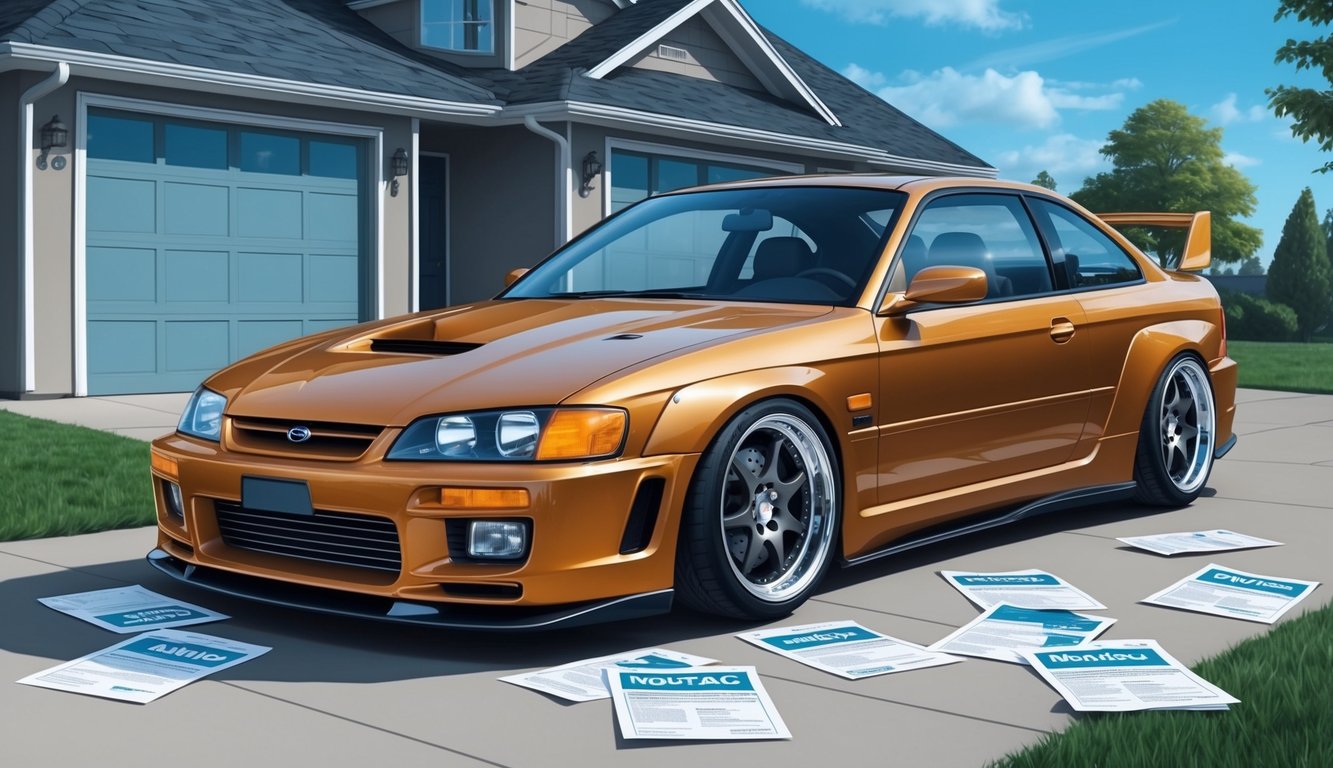
Non-factory modifications to your vehicle can affect your car insurance coverage.
Your standard policy may not fully protect these upgrades if you’ve made custom changes or added aftermarket parts.
Many insurance companies offer limited coverage for modifications, typically up to $1000.
For example, PEMCO provides up to $500 in custom parts coverage, with options to increase this amount for an additional fee.
It’s crucial to inform your insurer about any modifications you’ve made to your car.
Failing to do so could result in denied claims or even policy cancellation if the modifications are discovered after an accident.
Modified car insurance policies are available to cover the full value of your customizations.
These specialized policies often require an appraisal to determine the true value of your modified vehicle.
Keep in mind that certain modifications may increase your insurance premiums. Performance enhancements or expensive cosmetic changes can lead to higher rates due to increased vehicle value and potential safety risks.
Before modifying your car, consider contacting your insurance provider to discuss how the changes might impact your coverage and premiums.
This proactive approach can help you avoid unexpected gaps in protection and ensure you have appropriate coverage for your customized vehicle.
9) Regular Maintenance
Your car insurance policy typically doesn’t cover routine maintenance costs.
This includes oil changes, tire rotations, and brake pad replacements.
Insurance is designed to protect you from unexpected events, not the predictable wear and tear of your vehicle.
Regular upkeep is considered part of your responsibility as a car owner.
Neglecting maintenance can lead to bigger problems.
If your car breaks down due to lack of care, your insurance won’t cover the repair costs.
It’s important to keep up with your vehicle’s recommended service schedule.
This not only helps prevent breakdowns but also maintains your car’s value.
Some insurers may even deny claims if you’ve skipped essential maintenance.
They might argue that the damage resulted from neglect rather than an accident.
To protect yourself, keep detailed records of all maintenance performed on your vehicle.
This can help if you need to dispute a claim denial.
Remember, while insurance won’t cover routine maintenance, staying on top of it can save you money in the long run.
It reduces the risk of costly breakdowns and helps your car run more efficiently.
10) Personal Belongings
Your car insurance policy typically doesn’t cover personal belongings left in your vehicle.
This exclusion applies to items such as electronics, clothing, jewelry, or other valuables you may keep in your car.
If your vehicle is broken into or stolen, your auto insurance won’t reimburse you for the loss of these items.
The same applies if your personal belongings are damaged in an accident.
Comprehensive coverage will pay to replace your stolen car, but it won’t cover the contents inside.
For protection of your personal property, you’ll need to rely on other insurance policies.
Your homeowners or renters insurance usually provides coverage for personal belongings, even when they’re outside your home.
Check your policy details to understand the extent of this coverage.
It’s advisable to avoid leaving valuable items in your car whenever possible.
If you must, keep them out of sight to reduce the risk of theft.
Consider creating an inventory of valuable items you frequently carry in your car.
This can be helpful if you need to file a claim with your homeowners or renters insurance.
Understanding Car Insurance Exclusions
Car insurance policies contain specific exclusions that limit coverage in certain situations.
Knowing these exclusions helps you understand the scope of your protection and avoid unexpected costs.
Why Exclusions Exist
Insurance companies use exclusions to manage risk and keep premiums affordable. Exclusions help insurers rule out coverage for costly or unpredictable events.
This allows them to offer more reasonable rates to policyholders.
Exclusions also provide clarity on what isn’t covered.
By explicitly stating non-covered situations, insurers reduce ambiguity and potential disputes over claims.
Some exclusions protect against moral hazard.
For example, excluding coverage for intentional damage discourages policyholders from causing deliberate harm to collect insurance payouts.
Common Terms and Definitions
Car insurance exclusions are instances where your policy will not provide coverage.
These are typically listed in your policy documents.
Common exclusions include:
- Wear and tear: Regular maintenance and mechanical failures due to age are not covered.
- Excluded drivers: Specific individuals explicitly denied coverage under your policy.
- Acts of nature: Some policies exclude damage from floods, earthquakes, or other natural disasters.
Understanding these terms helps you assess your coverage gaps and consider additional protection if needed.
How Exclusions Affect Your Coverage
Car insurance exclusions play a crucial role in determining the scope of your protection.
They define specific situations where your policy won’t provide coverage, directly impacting your financial responsibility in certain events.
Impact on Claims
Exclusions can significantly affect your ability to file successful claims.
When an incident falls under an excluded category, your insurance company will likely deny coverage.
For example, if you have an excluded driver on your policy who gets into an accident while driving your car, you’ll be responsible for all damages and costs.
Regular wear and tear is another common exclusion.
If your car breaks down due to lack of maintenance, your insurance won’t cover repair costs.
This emphasizes the importance of proper vehicle upkeep.
Limitations in Different Policies
Different insurance policies have varying exclusions, which can limit your coverage in unique ways.
For instance, some policies may exclude coverage for natural disasters like floods or earthquakes unless you have specific add-ons.
Luxury or high-performance vehicles might face additional exclusions or require specialized coverage.
It’s essential to review your policy carefully to understand these limitations.
Some exclusions can be removed by purchasing additional coverage or riders.
For example, you might be able to add coverage for rental cars or custom equipment that would otherwise be excluded.
Tips for Navigating Car Insurance Exclusions
Understanding your car insurance policy and its exclusions is crucial for ensuring you have the right coverage.
By carefully reviewing your policy documents and asking the right questions, you can avoid unpleasant surprises when filing a claim.
Reviewing Policy Documents
Start by thoroughly reading your car insurance policy.
Pay close attention to the exclusions section, which outlines situations not covered by your insurance.
Look for terms like “excluded drivers” or specific scenarios that may void your coverage.
Make a list of any exclusions you don’t understand or that concern you.
Consider creating a quick reference guide for yourself, highlighting key exclusions and coverage limits.
If your policy includes optional coverages, review their specific terms and conditions.
Some add-ons may provide protection for situations typically excluded in standard policies.
Questions to Ask Your Insurance Provider
When you discuss your policy with your insurance provider, make sure to ask specific questions about exclusions.
For example, ask about common exclusions like “wear and tear” or mechanical failures.
Then, inquire if there are any optional coverages to address these gaps.
You should also clarify the definition of terms used in the exclusions section.
For example, ask what constitutes “regular maintenance” or “acts of nature” in the context of your policy.
Lastly, ask about any grace periods for premium payments to avoid coverage lapses.
Also, ask about the process for adding or removing drivers from your policy to ensure you’re always covered.


